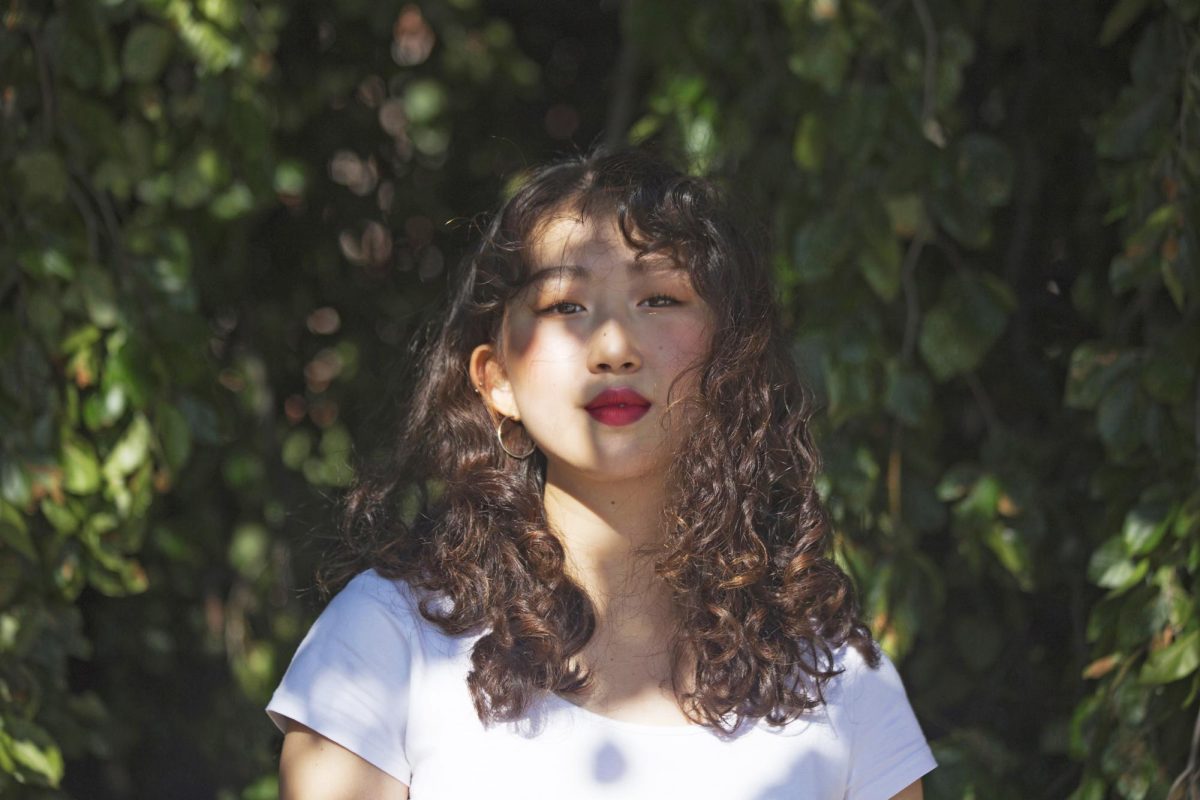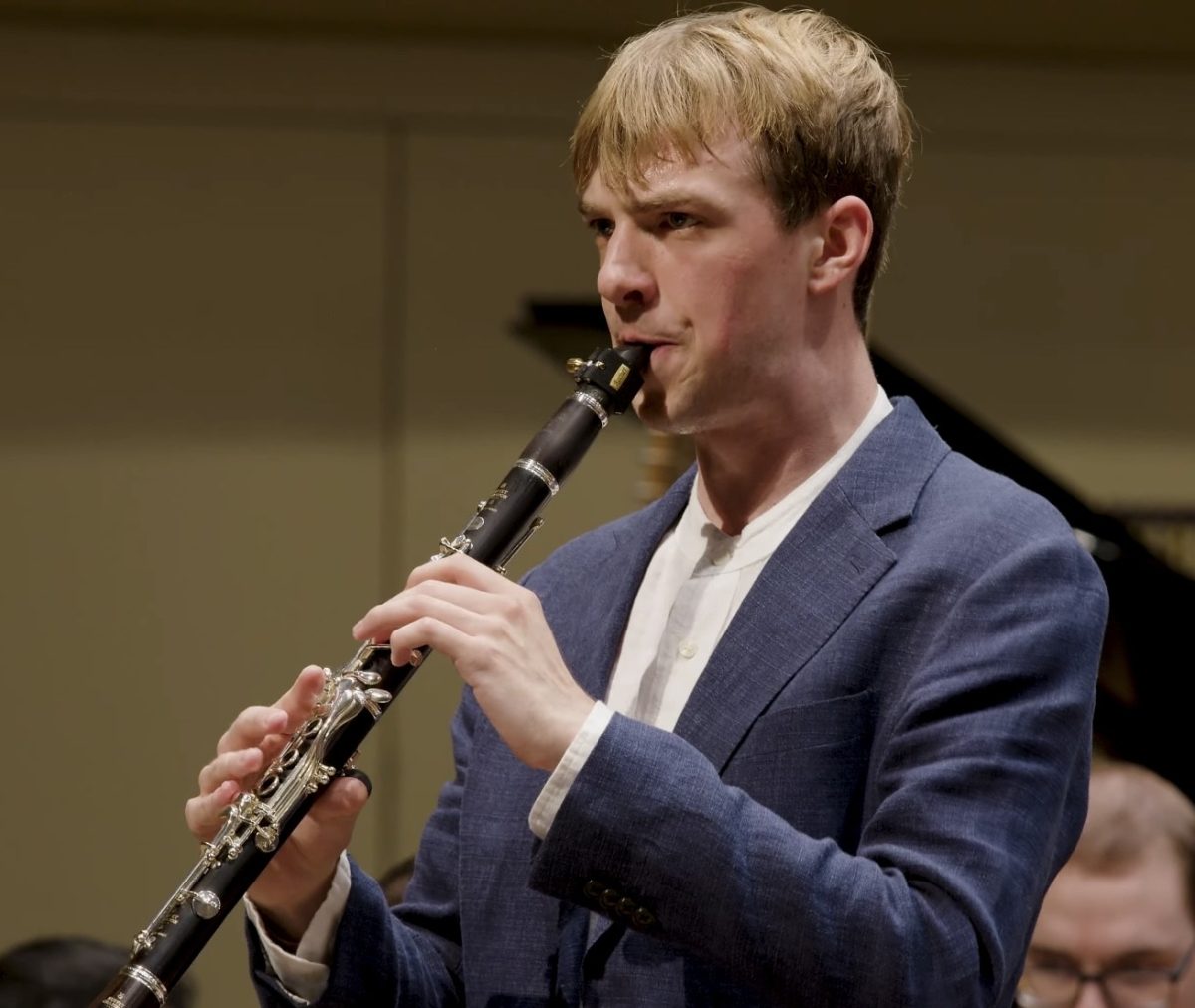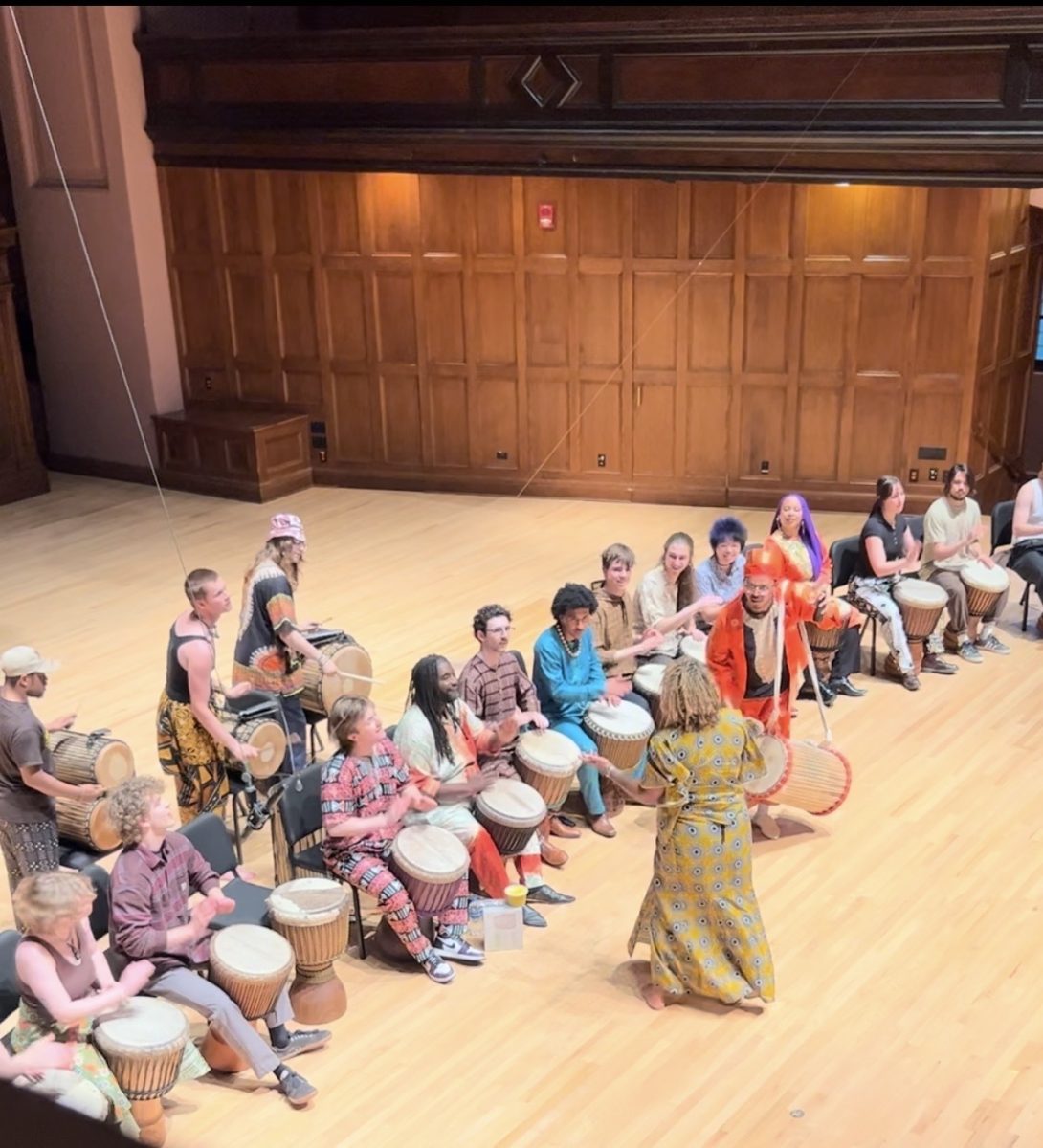As of 2023, the jazz scene in northeast Ohio could be described as small but mighty. There are a few venues in the region solely dedicated to live jazz, the preeminent one being the Bop Stop, located in the Ohio City neighborhood of Cleveland. The Bop Stop is owned and managed through the Music Settlement, a nonprofit organization founded in 1912 which is dedicated to the preservation and future of music education and appreciation in the Cleveland area. The Music Settlement also offers early-childhood music programs and music therapy.
Caleb Smith, OC ’19, a trombonist, composer, and self-taught pianist, shared his thoughts on performing at the Bop Stop.
“It’s not Jazz at Lincoln Center, but the Steinway at the Bop Stop is definitely nicer than some of the pianos in New York,” Smith said. “The space is great, and the people there are always cool and really nice.”
Alternatively, there’s the BLU Jazz+ club in Akron, and the recently reopened Nighttown in Cleveland Heights, which was a jazz club for years. The Nighttown is now under new ownership, and it remains to be seen whether the venue will be more of a restaurant or a true jazz club.
According to Visiting Professor of Jazz Studies Paul Samuels, a Cleveland native, the demand for live jazz in Cleveland used to be much greater, and there used to be far more venues offering consistent, live jazz from big names in the industry.
“You had people like Nancy Wilson out here for a month at a club, or Ahmad Jamal, John Coltrane, or Miles Davis,” Samuels said. “But unlike other places, that culture and demand left with those musicians. It’s not like Detroit or Chicago, where they eat and breathe this music together.”
Jazz may not be as deeply rooted in Cleveland as it is in the cities Samuels mentioned, or in New Orleans or New York City, for instance. It is, however, still an important part of the city’s culture. When asked what makes Cleveland’s music unique, Samuels suggested that the divide between the working class and upper class in Cleveland is particularly distinct, and that Cleveland’s music and art scenes act as a socioeconomic glue of sorts in the city.
“The culture in Cleveland is so spread out, from the people who have money to the steel workers who don’t,” Samuels said. “But it comes together through the musicians.”
Despite this, Cleveland doesn’t offer the same appeal to younger musicians that bigger, more happening cities do, notably New York City. One may ask if it’s actually worthwhile to compare Cleveland to New York, when the music may be serving different purposes. Maybe, maybe not. But it seems almost inevitable that New York will be brought up in a conversation about any city’s jazz scene. New York’s pull on up-and-coming jazz musicians can be equally inevitable.
“There was a strong draw for me to move to New York because a great number of my former Oberlin peers currently live there,” Smith said. “I know some people have their qualms about moving to New York, but I will say, especially if you’re trying to play so-called jazz, there’s so much happening literally every night in this city, not to mention the density of talented musicians.”
After graduating from Oberlin, Smith went on to get his Master of Music from New England Conservatory in Boston, Massachusetts. From there, he briefly returned to Oberlin as a curatorial assistant for the Conservatory Special Collections.
“When I had the job in Oberlin, my friends in New York were like, ‘Caleb, what are you doing in the cornfields? You need to come out here,’” Smith said.
That being said, Smith was appreciative of the musical opportunities and connections he made through Oberlin and Cleveland-based musicians.
“Definitely just being on the scene in Cleveland helped with my sight-reading and playing,” Smith said. “Sam Blakeslee, a trombonist, has this big band that I played with a few times at BLU Jazz+, and you had to be a really good reader to play his charts.”
Second-year Jazz Performance major Max Simas offered a contrasting view of the New York scene.
“I do feel like there’s a need or a pressure to prove something to myself or to prove something to other people, and that no one knows who you are unless you’re in New York,” Simas said. “Different music scenes have different problems. Los Angeles is so spread out that you don’t meet people. Maybe you have a home studio and try to make Instagram fame out of yourself or something. And then New York is the opposite, where it’s like everyone knows everyone, but you’re also no one.”
New York City isn’t for everyone, and there are successful jazz musicians who never spent any prolonged periods of time in the city. Samuels, who spent some 20 years as an artist in New York, found his time in the city to be a necessary catalyst for his career as a jazz drummer.
“There are people that are successful that haven’t gone to New York, but you must look at them very carefully,” Samuels said. “If they could do that without being in New York, they must be extraordinary in some way, I would think.”




